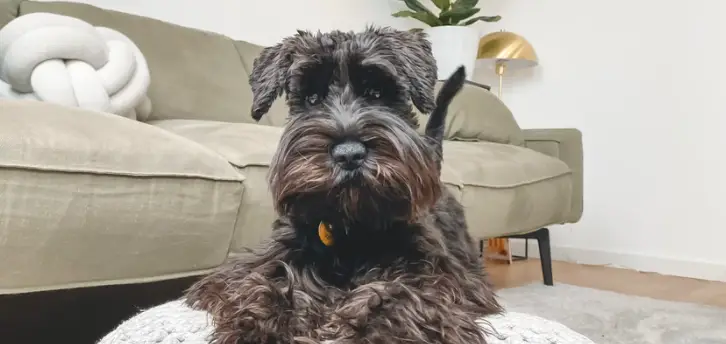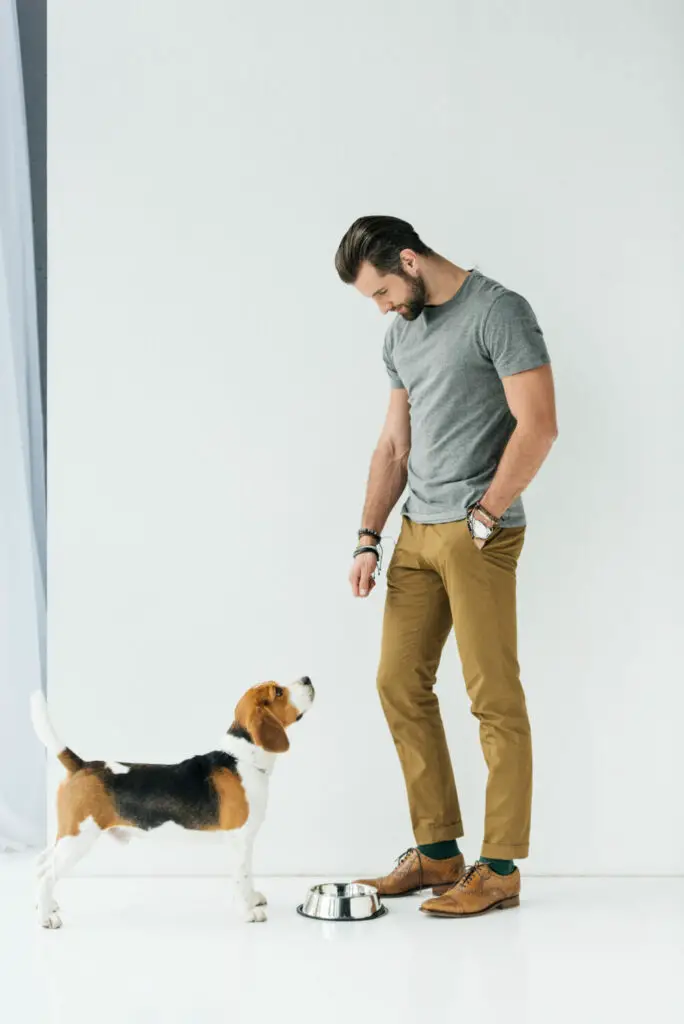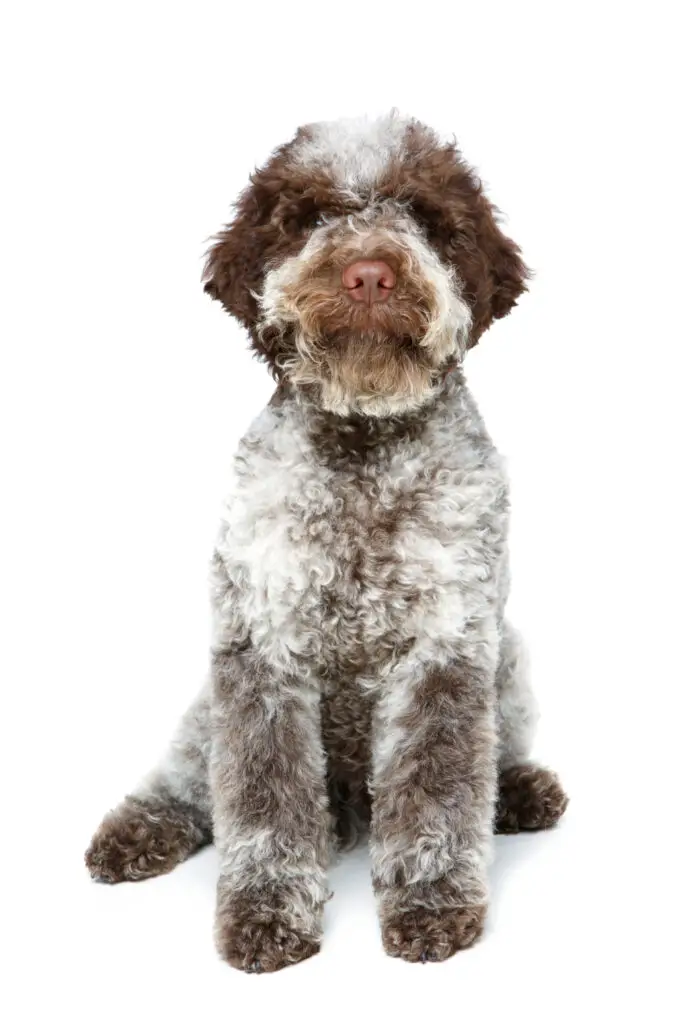Giant Schnauzer Ear Cropping: Is It Necessary?
Giant Schnauzer ear cropping is a common practice for this breed. It’s intended to keep the ears erect and to meet breeding standards.

In this post, we will discuss ear cropping, how it’s done in Giant Schnauzers, and the aftercare tips you should know.

What is ear cropping?
Ear cropping is the practice of cutting the floppy part of a dog’s pinna or earlobe. It’s then followed by posting and taping the dog’s ears to ensure that it will remain upright.

This is often the solution for floppy dog ears and for pet owners who want to boost the hearing of their Giant Schnauzers. Aside from Giant Schnauzers, ear cropping is also widely done in breeds like Pit Bulls, Dobermans, and Staffordshire Terrier.
Aside from boosting the sense of hearing, ear cropping is done out of the belief that it will reduce the risk of ear infections associated with floppy pinnas. However, many believe that modern ear cropping is often performed for the sake of aesthetic purposes.
With this, people are divided about ear cropping in dogs. Others deem it cruel and unnecessary, especially since some pet owners go to great lengths of performing DIY ear cropping.
Whether you prefer ear cropping for your dog or not, it’s important to know that this procedure is purely optional. It’s also up to your dog’s veterinarian to determine if your Schnauzer is suitable for the procedure.
When is ear cropping done in Giant Schnauzers?
Ear cropping in Giant Schnauzers must be done at an early age or it will be too late. Most veterinarians will only do ear cropping if the pup is within 7 to 12 weeks of age or while the dog weighs 15 to 20 lbs.
This is because Giant Schnauzers’ ears will only stand up if trimmed early. Their ear muscles and cartilage are still developing and easier to train through taping after cropping.
The proper timing of ear trimming in dogs is crucial to avoid extreme pain and trauma once the canine is older. According to experts, dogs bleed more when they are being ear-cropped at an older age.
With this, most veterinarians will refuse to crop the ears of a Giant Schnauzer at a specific age. Meanwhile, vets who advocate against ear cropping will decline to perform the procedure entirely.
What to expect during ear cropping
It’s important to know the basics of ear cropping before you bring your Giant Schnauzer to the vet. The following are some of the points every owner should know:

1. Types of Giant Schnauzer ear crops
There are three major types of ear crops done in Giant Schnauzers. Pet owners should know this beforehand as they will have to choose.
Basically, owners of Giant Schnauzers can choose between short crop, tall crop, and military crop. Each one serves a specific purpose.
The short crop leaves a third of the Giant Schnauzers original ear. It’s in between the military and tall crop, which is a popular choice among pet owners.
Meanwhile, the tall crop removes the least part of the dog’s ears. After tall-cropping the Schnauzer’s ears, it will be posted to prevent flopping.
Lastly, the military crop is the shortest option you can get for your Giant Schnauzer. It has a wider base and the ears have a very low profile.
2. The cost of ear cropping
The cost of ear cropping Giant Schnauzers varies, depending on the clinic’s location, the vet’s expertise, and more. But generally, it will set dog owners back for around $250 to $1,000.
However, you should know that a higher price tag doesn’t always guarantee the best crop. It’s important to check the vet’s track record in conducting such a procedure.
Aside from the ear cropping itself, you should expect to shell out more for follow-up vet visits and medication.
3. The choice of veterinarian
Not all veterinarians are willing to conduct ear cropping. It’s important to inquire firsthand before bringing your Giant Schnauzer for the procedure.
To find the best vet for the task, I recommend asking your dog’s breeder for recommendations. Legitimate breeders often have a network of vet professionals who provide them services like ear cropping.
Once you find a vet that will crop your Schnauzer’s ears, make sure that you ask for photos of their previous crops. This will give you an idea about how efficient the vet is and if he can meet your expectations.
Giant Schnauzer ear cropping aftercare tips
After getting your Giant Schnauzer’s ears cropped, it’s important to care for the wounds properly. Here are a few aftercare tips to keep in mind:

1. Follow the vet’s orders
It’s extremely important to listen to the vet’s instructions after your dog’s ear cropping. You can ask permission to record the vet’s instructions, so you won’t miss anything.
This includes a schedule of medication, how to clean the ears, what to do in specific situations, and so on.
2. Clean your dog’s ears
A big part of healing your dog’s ears is keeping them clean. You’ll have to replace the bandage and disinfect the wound using peroxide or other solutions that the vet prescribed.
Overall, you’ll need to do this several times a day as instructed. This will prevent infections from developing, which is very common in this procedure.
3. Clean the scabs
Once your Schnauzer’s ears are starting to heal you’ll need to remove the scabs from the wounds. You should do so once it’s dry and already coming off the skin.
This is important, so the scabs won’t block the ears from being pointed.
To remove the scabs, you can dab your dog’s ears with a towel soaked in warm water. This will help soften up the scabs, so you can pick them gently.
4. Put your dog in a cone
During the first few days after ear cropping, you need to put your Giant Schnauzer in an Elizabethan cone. This is to prevent the pooch from scratching or rubbings its ears.
You will need to keep the cone on until the stitches on your dog’s ears have healed.
Is ear cropping cruel?
There is divided opinion as to whether is cruel or not. It’s a painful elective procedure, so it’s up to the owners to decide if they will push through with cropping.
According to the American Veterinary Medical Association (AVMA), procedures like ear cropping are ultimately done for aesthetic purposes. With that, not all vets are going to accept your Giant Schnauzer for this procedure.
In response to AVMA, the American Kennel Club (AKC) issued a statement expressing their disappointment over the former’s lack of consultation. AKC noted that ‘mislabeling’ ear cropping as a mere cosmetic procedure disrespects the function and history of purebred canines.
So in the point of view of AKC, ear cropping is acceptable as long as it’s performed responsibly by a professional.
How long does it take for cropped ears to heal?
Most cropped ears will heal within 4 to 8 weeks. Proper aftercare is necessary to ensure that infections won’t delay your Schnauzer’s recovery.
To speed up the healing process, the cropped ears must be cleaned, bandaged, and posted. You should also provide the antibiotics and painkillers prescribed by your dog’s veterinarian.
Lastly, you should prevent your pup from touching, pawing, or rubbing its newly cropped ears anywhere. This way, the stitches won’t unravel or bleed.
Conclusion
Giant Schnauzer ear cropping is a common procedure for the breed. It’s done to achieve breed standards and to enhance the canine’s hearing and reduce ear infections.
If you’re planning to get it done on your dog, make sure that you contact a licensed and experienced veterinarian. This will ensure the best results while preventing potential complications.
Remember that ear cropping should never be done at home. As much as you’d want to save money, DIY cropping is the one that’s inhumane, cruel, and unacceptable.
